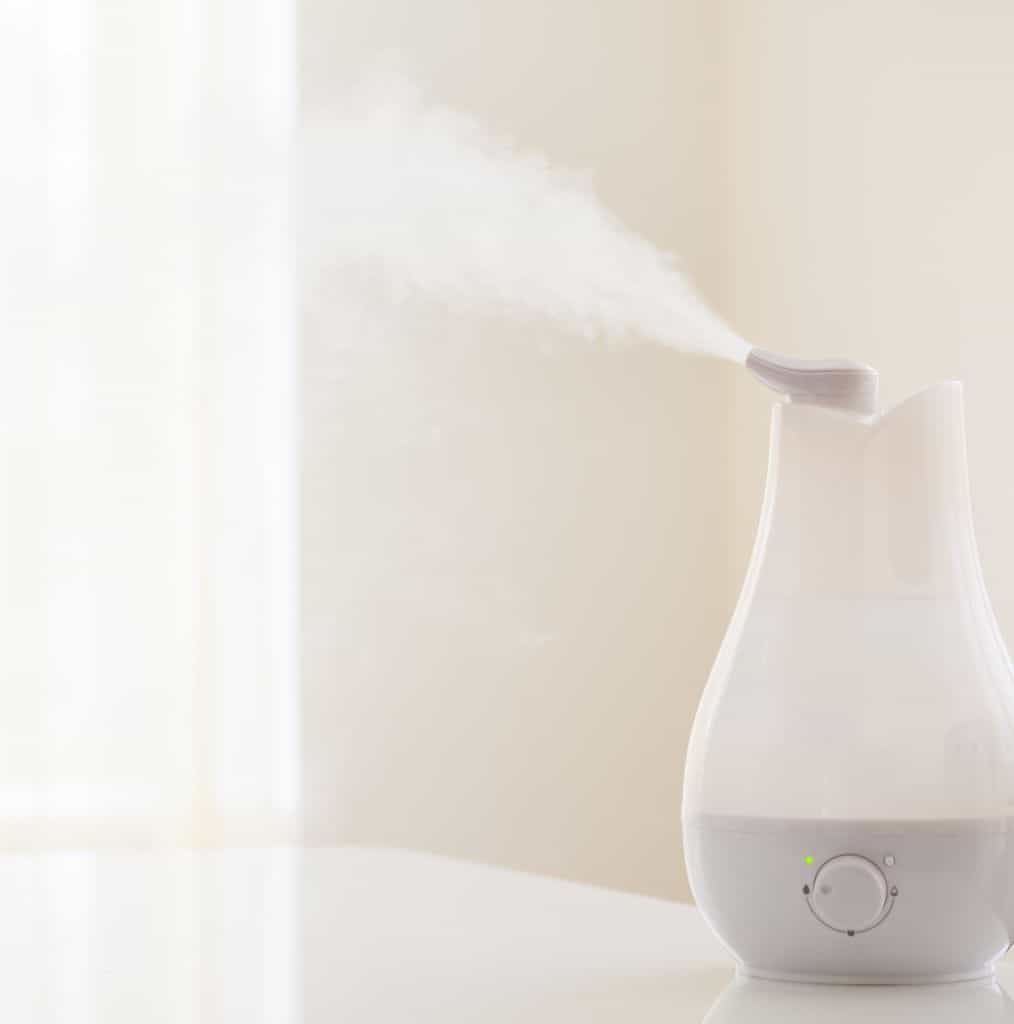Can humidifiers cause mold? This is a question that many people are asking these days.
In this article, we’ll look at the evidence and try to answer that question once and for all.
Can Humidifiers Cause Mold?
No, they do not cause mold, if you run them properly. If you run a humidifier and your room becomes too humid then there is a chance that mold will grow.
I like said before, mold will grow in a highly humid environment. So carefully monitor your home humidity level. The normal humidity is around 30 to 50%.
Normally humidifiers do not cause mold but they can contribute to the growth of the mold in many ways.
How a Humidifier Can Contribute To The Growth Of Mold
A humidifier can contribute to the growth of mold in a few ways:
- It can increase the humidity of the air, and mold thrives in humid environments.
- It can introduce new mold spores into the air, which can then settle onto surfaces and begin to grow.
- A humidifier can create condensation on surfaces, providing the perfect conditions for mold to grow.
While a humidifier can be helpful in some situations, it’s important to be aware of the potential for mold growth and take steps to prevent it.
For example, you should use a dehumidifier in combination with a humidifier to keep moisture levels in check.
You should also regularly clean your humidifier to prevent mold spores. Taking these precautions allows you to enjoy the benefits of a humidifier without increasing your risk of mold growth.
What is Mold?
Molds are fungi that can be found both indoors and outdoors. They reproduce by releasing spores into the air, which can then settle on surfaces and start new colonies.
Molds thrive in damp, dark, and humid conditions and can often be found in bathrooms, kitchens, basements, and other homes prone to moisture.
Some common indoor molds include Aspergillus, Penicillium, Cladosporium, and Stachybotrys chartarum, commonly known as black mold.
While some molds are harmless, others can pose significant health risks, especially to individuals with compromised immune systems, allergies, or respiratory conditions.
Exposure to mold can lead to a range of health issues.
Inhalation of mold spores can cause respiratory problems, such as coughing, wheezing, and shortness of breath.
People with asthma or allergies may experience exacerbated symptoms, including nasal congestion, sneezing, and itchy or watery eyes.
What Causes Growth Of Molds In Homes?
Molds are a type of fungi that can be found both indoors and outdoors. They are typically found in damp, warm, or humid environments.
While molds are not necessarily harmful, they can cause allergic reactions in some people. Additionally, molds can also cause structural damage to homes by breaking down organic materials such as wood.
Various factors can contribute to mold growth in homes, including high humidity levels, leaks, and flooding.
It is important to keep the indoor environment as dry as possible to prevent mold growth. This can be accomplished by using a dehumidifier and repairing any leaks promptly.
Additionally, it is important to clean areas where mold is present to prevent the fungus spread.

Using Humidifier Properly To Prevent Mold
Most people know that mold can be a severe problem in the home. Not only is it unsightly, but it can also cause respiratory problems and trigger allergies.
Mold thrives in moist environments, so it’s important to keep your home as dry as possible. However, in some cases, this isn’t possible or practical.
If you use a humidifier, it’s important to take precautions to prevent mold growth:
- Clean the humidifier regularly according to the manufacturer’s instructions. This will help to remove any bacteria or mold that might have gotten into the unit.
- Don’t over-humidify your home. The ideal relative humidity level is between 30 and 50 percent. If the group gets too high, mold will start to grow.
- Keep an eye on areas of your home that are damp, such as the bathroom or basement.
If you see signs of mold, act quickly to clean it up and improve ventilation.
Also read: Can humidifier cool a room?
Proper Maintenance and Regular Cleaning of The Humidifier
Proper Maintenance and regular cleaning of the humidifier are essential to its proper function and efficacy.
Depending on the model, humidifiers require different levels of Maintenance. However, all models should be cleaned regularly every 1-3 days.
Proper cleaning includes Disinfecting the unit according to the manufacturer’s instructions. This is typically done by running a solution of water and vinegar through the unit.
Additionally, emptying and refilling the water reservoir as directed is important. Doing so will help to prevent the growth of mold and mildew. Finally, check the filter for signs of wear and replace it as needed.
Monitor The Humidity Levels of Your Room
One important factor to consider when creating a comfortable and healthy indoor environment is the room’s humidity level.
Too much or too little humidity can lead to several problems, such as aggravated allergies, increased dust mite growth, and mold growth.
Humidity levels can be monitored with a simple hygrometer, and there are a few easy ways to adjust the humidity level to ensure it stays within a comfortable range.
If the humidity level is too high, opening a window or running a fan will help to lower it. If the humidity level is too low, using a humidifier can help to raise it.
FAQ
Does a Humidifier Make Mold Worse?
Yes and No, If your room is too humid then mold can grow faster but if you can keep your room humidity at a normal level (30-50) you can stan the mold growth.